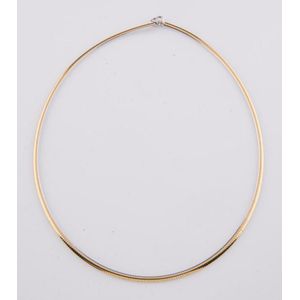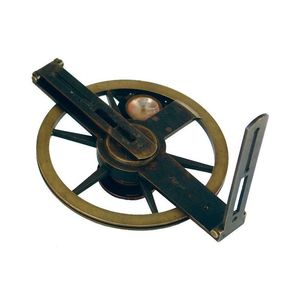Victorian Silver Fluted Bowl with Lion Mask Handles
You must be a subscriber, and be logged in to view price and dealer details.
Subscribe Now to view actual auction price for this item
When you subscribe, you have the option of setting the currency in which to display prices to $Au, $US, $NZ or Stg.
- Hallmarks - A mark stamped on articles of precious metals in Britain, since the 14th century, certifying their purity. It derives its name from the Guild Hall of the Goldsmiths' Company, who recieved its Charter in 1327 giving it the power to assay (test the purity) and mark articles of gold and silver.
The hallmark will consist of several marks, including the:
- silver standard mark, indicating the purity of the metal. Sterling silver is .925 pure silver.
- the city mark indicating the city in which it was assayed eg London, Birmingham, York etc.
- the date mark, usually a letter of the alphabet in a particular font and case,
- a duty mark, indicating whether duty had been paid to the crown, and only in use from 1784 to 1890
The piece may include an additional mark, the maker's mark, although not forming part of the hallmark, will be located in the vicinity of the hallmarks.
Sometimes silver plated items will bear faux hallmarks, often confusing those not familiar with silver markings. - Britannia Standard - A higher grade of silver than sterling silver. Britannia standard silver contains at least 958 parts per thousand of pure silver, while sterling silver contains at least 925 parts per thousand of pure silver.
The Britannia standard was obligatory in Britain between 1697 and 1720 and after that was optional, so there are very few silver items that come onto the market that are Britannia standard.
Not to be confused with silver plated Britannia metal items, often marked as "EPBM", a pewter type alloy, that when unplated can be temporarily polished to a silver-like lustre. - Lion Mask - The lion mask has been used for centuries in various forms of art and design, including furniture, silver, and ceramics, and is usually y depicted as a stylized representation of the face of a lion, often with an open mouth and protruding tongue. and is often used as a handle, knob, or other decorative element.
In furniture design, lion masks were popular in the neoclassical and Empire styles of the late 18th and early 19th centuries. They were often used as decorative elements on the legs or arms of chairs, as well as on cabinet and drawer pulls. It was also used as a handle, knob, or other decorative element.
In silverware design, lion masks were often applied to tea and coffee pots, as well as on candlesticks, snuff boxes, and other small silver items. The lion mask was often used in combination with other neoclassical motifs, such as laurel wreaths or acanthus leaves, to create a sense of grandeur and classical elegance.
In ceramics, lion masks were often depicted in relief, and were sometimes used in combination with other decorative elements, such as garlands or swags. - Victorian Period - The Victorian period of furniture and decorative arts design covers the reign of Queen Victoria from 1837 to 1901. There was not one dominant style of furniture in the Victorian period. Designers used and modified many historical styles such as Gothic, Tudor, Elizabethan, English Rococo, Neoclassical and others, although use of some styles, such as English Rococo and Gothic tended to dominate the furniture manufacture of the period.
The Victorian period was preceded by the Regency and William IV periods, and followed by the Edwardian period, named for Edward VII (1841 ? 1910) who was King of the United Kingdom and the British Dominions and Emperor of India for the brief period from 1901 until his death in 1910.
This item has been included into following indexes:
-
bowls and dishes, silver
- silver, 19th century 231
- silver, Georgian 129
- Lambert & Co. (London) - silver, maker or retailer 10
Visually similar items

A two tone Omega chain, 18ct yellow and white gold.

A large pair of Wedgwood black basalt jardinieres, English, 19th century. 20 cm high

A contemporary scrimshawed whale's tooth, showing a Chinese market scene and entitled '1000 B.C.', detailed in black, smooth overall finish. Length 15 cm

A circumferentor surveying instrument by Angelo Tornaghi, Sydney, Australia, c.1865. The maker who had been the Australian agent for Negretti & Zambra developed a light circumferentor that gained popularity for field surveying, a similar instrument was use
